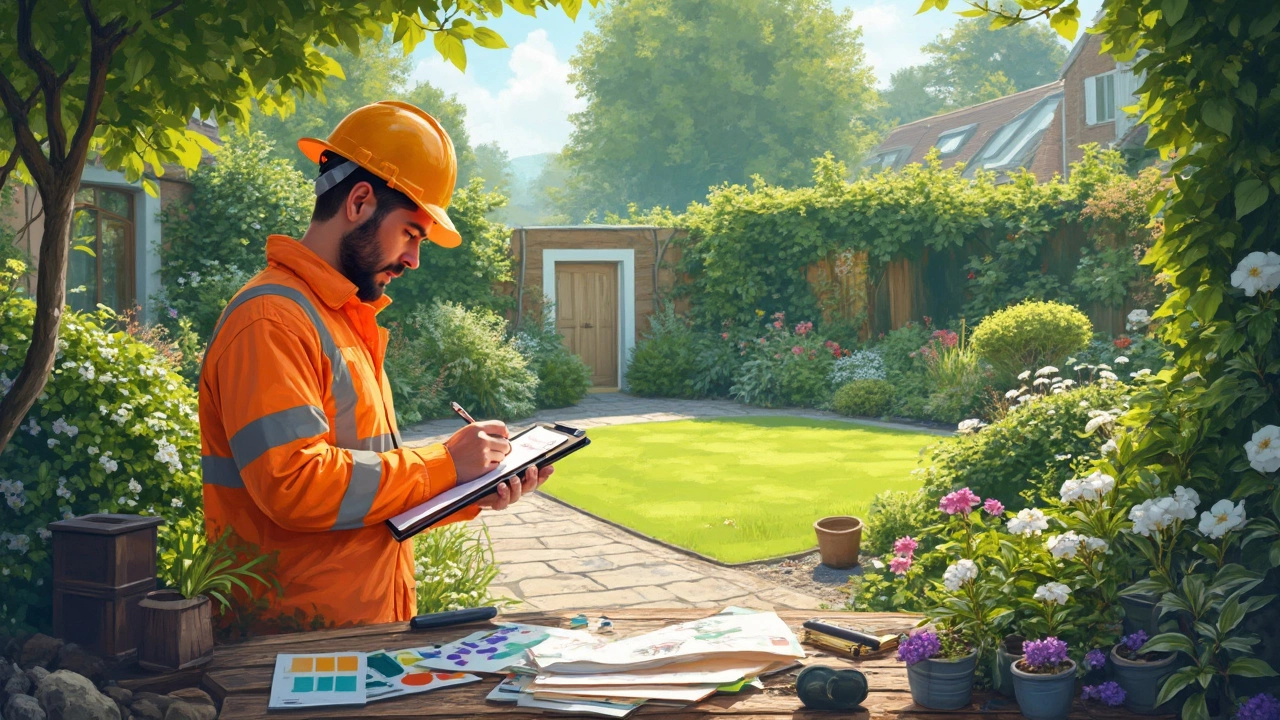Landscaping Duties: Essential Tasks for a Healthy Yard
Keeping a yard looking good isn’t magic—it’s about doing the right chores at the right time. Whether you have a tiny patio garden or a big lawn, a few simple duties will stop weeds, keep soil happy, and make the place look inviting.
Every‑Week Basics
The first habit to lock in is mowing. Cut no more than one‑third of the grass height each time; this keeps the lawn dense and chokes out weeds. While you’re out, run the mower’s edge blade along sidewalks, driveways and garden beds so the trim looks neat.
Next, give the lawn a quick walk‑over to pull any visible weeds. Hand‑pulling is fastest for a few intruders and avoids the chemicals that can harm beneficial insects. If you notice dry spots, check the sprinkler heads. A clogged nozzle can leave parts of the lawn thirsty while the rest gets over‑watered.
Another weekly win is clearing debris. Fallen branches, leaves or pet waste can smother grass and invite pests. A light rake or a blower keeps the surface open for air and sunlight.
Seasonal Must‑Do’s
Spring is the prime time to feed the soil. Spread a slow‑release fertilizer after the last frost and then lightly work it into the top inch of soil. While you’re in the yard, prune dead or damaged branches and trim back overgrown shrubs. Cutting back encourages new growth and improves air flow.
Summer brings heat stress, so mulch your flower beds. A 2‑3 inch layer of bark or wood chips keeps soil cool, holds moisture, and reduces weed growth. Check your irrigation system weekly; look for broken hoses, low pressure or uneven coverage and fix them before they cause dry patches.
In autumn, focus on leaf removal. A thick leaf layer blocks light and can cause fungal problems. After you clear the leaves, give the lawn a light aeration—poke small holes with a garden fork—to improve root breathing before winter sets in. Overseed thin areas now so new grass has a chance to establish before the cold.
Winter doesn’t mean you stop caring. Wrap delicate perennials in burlap or move them to a sheltered spot to protect against frost. Clean and sharpen tools, then store them in a dry place to prevent rust. A quick check of your drainage lines before the freeze can stop water from backing up and damaging foundations.
Having the right tools makes each duty easier. A reliable mower, a sturdy pair of pruning shears, a garden fork, and a quality hose nozzle are enough for most jobs. Wear gloves and safety glasses when cutting or handling chemicals—prevention beats injury every time.
Quick checklist: mow weekly, edge after each cut, pull weeds as you see them, clear debris, fertilize in spring, mulch in summer, aerate & overseed in autumn, protect plants in winter, maintain tools year‑round. Follow these steps and your yard will stay healthy, low‑maintenance, and ready for any season.
What Does a Landscaper Actually Do? Real Job Duties, Skills, and Insider Tips

Unlock the real job of a landscaper: from design to planting and hardscape magic, with expert tips for your outdoor space. Know what to expect and how to hire smart.
read more



